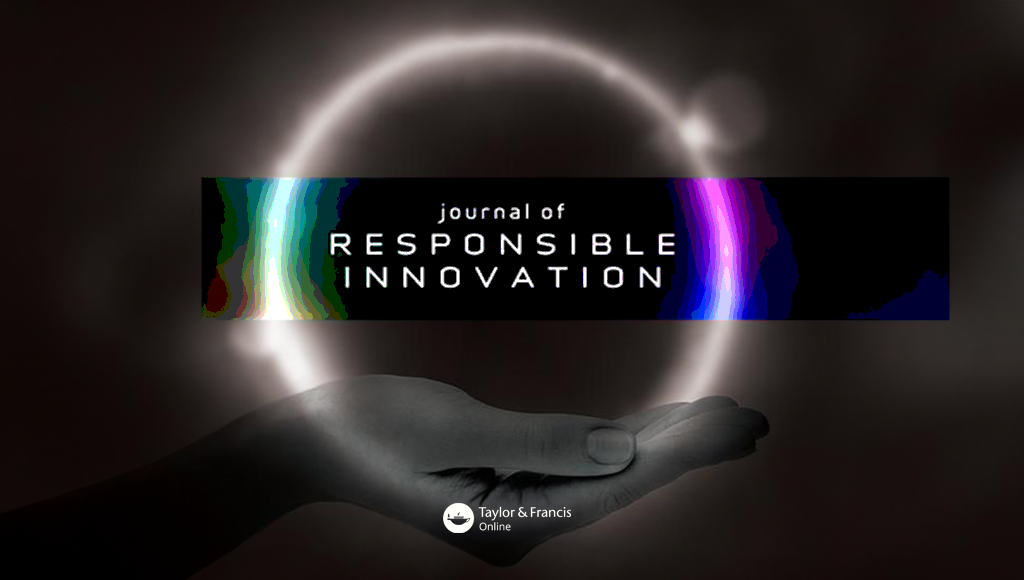To celebrate the release of the Bassetti Foundation White Paper on Artificial Intelligence, Jonathan Hankins reviews several recent Journal of Responsible Innovation articles that address the topic of AI from different perspectives and points of view.
In A systemic perspective on bridging the principles to-practice gap in creating ethical artificial intelligence solutions – a critique of dominant narratives and proposal for a collaborative way forward, Christian Herzog and Sabrina Blank critique demands for bridging the principles-to-practice gap in artificial intelligence that are voiced for instrumental reasons.
The principles to practice gap refers to the idea that abstract ethical principles do not provide direct guidance on how they should be taken into account in practice. The authors focus on bridging this gap, firstly describing how it plays out, before offering an analysis of current narratives that run against what they suggest could be an approach that stays true to ethics’ philosophical underpinnings and avoids instrumentalizations.
Their focus is thus on how ethical considerations can be brought into effective utilization.
The authors’ perspective aims to help developers to unpack ethical challenges themselves, perceiving this as integral to their profession, rather than viewing ethics as an external concern that must be dealt with.
Three narratives discussed and criticized are that ethical issues should be addressed to avoid a loss of trust, the need for actionable solutions and the claim that ethics can be outsourced. They describe these narratives as an expression of ‘ethics as a service’, before describing how a responsible innovation platform can facilitate and support the distribution of ethical responsibility and responsible innovation conduct.
2024 also saw the publication of Dual use concerns of generative AI and large language models, in which Alexei Grinbaum and Laurynas Adomaitis recommend the implementation of the Dual Use Research of Concern (DURC) framework (originally designed for life sciences) to the domain of generative AI.
The authors introduce the concept of dual use research, describing DURC as a utilitarian governance approach which is employed in potentially high-risk innovative biotechnological research. They propose applying the framework to generative AI, redefining the traditional categories in order to address concerns specific to generative AI and Large Language Models.
In the sections that follow the authors examine how DURC frameworks could play a role in establishing the shared responsibility of complex stakeholder networks, before exploring advantages and potential limitations. They close with the following series of specific recommendations for LLM research as an application of the DURC framework: Develop standardized benchmarks to evaluate foundation models and generative AI systems for intentional abuse; evaluate foundation models for unintentional harm via ‘red-teaming’ by independent human testers; evaluate datasets and use high-quality data for training; enforce the human-machine distinction via watermarks; avoid over-policing and the sterilization of language and introduce a set of criteria and norms governing shared responsibility.
In ‘We have opened a can of worms’: using collaborative ethnography to advance responsible artificial intelligence innovation, Andrés Domínguez Hernández and Richard Owen suggest collaborative ethnography as a methodology to promote intra disciplinary research on AI. Some of the problems that this proposed methodology aims to address include unfavourable institutional arrangements, unclear publication avenues, and sometimes incompatible normative, epistemological and methodological commitments.
This study is set in the context of a data science project aimed at developing AI/ML solutions for misinformation detection and management.
After a discussion about tensions arising from interventionist and critical endeavours within STS and allied fields and how these sensibilities can be mobilized to engender responsible innovation in the field of AI, the authors describe the setting up of the study. They discuss the rationale behind the choice of collaborative ethnography as a methodology and how this was configured and deployed within the AI project, before concluding by drawing lessons for interdisciplinary teams on how collaborative ethnography can offer a generative and productive space for critique, self-critique/reflexivity and action.
The authors pose a series of questions: what are the implications of flagging the shortcomings of classification algorithms? To what extent is opening the ‘can of worms’ of ML and calling out its limitations a generative (enough) process? How do we avoid critique becoming either unproductive relativism or instrumentalized as mere ethics washing associated with techno-centric solutions? Beyond listing the limitations of algorithms, can critical researchers take some degree of co-responsibility for the solutions being proposed to tackle the social problem? Can in we contribute pragmatically to reducing the harm of misinformation as an overarching key ‘matter of concern’?
They then offer 3 practical and methodological lessons about the importance of collective self-critique and of moving from a strategic vagueness, through a phase of understanding and reflection to a negotiation of pragmatic synthesis and tangible outcomes, concluding that collaborative ethnography offers an opportunity for all participants to jointly craft, refine and ultimately own the critiques and calls to action.
The authors suggest that evaluating the success of such interactive writing projects should focus not only on the final product, but on the possibilities for collaborators to learn from one another as part of the inscription process, recognizing the power dynamics at play, and finding acceptable terms for collaboration, even in the face of disagreement.
For further exploration, see Ethical, political and epistemic implications of machine learning (mis)information classification: insights from an interdisciplinary collaboration between social and data scientists by Andrés Domínguez Hernández, Richard Owen, Dan Saattrup Nielsen and Ryan McConville. Here, the authors present their findings that a series of algorithmic contingencies (key moments during model development) could lead to different future outcomes, uncertainties and even harmful effects. The findings allow the co-development of insights and recommendations for the responsible development of ML tools for misinformation detection and management.
Moving into 2025, Dafna Burema comments The challenges of being an in-house AI ethicist and how to overcome them, discussing the challenges of ambiguous objectives, conflict of interest, and epistemological differences.
This article grows out of the author’s experience of an in-house AI ethicist, offering a wonderful description of the various ‘positions’ that such a job brings. Buerma describes a series of conflicts of interest created by objective and epistemological ideas, as the individual simultaneously plays the roles of colleague, researcher, and evaluator.
In this easy to read (and very revealing) autobiographical analysis, the author proposes approaching the job as ethnographic fieldwork, presenting lessons learned in her conclusion:
Practicing AI ethics in an institutional context presents challenges related to positionality and identity. By adopting the concept ethicist-as-fieldworker, competing professional and institutional identities get better aligned through rapport-building, transparency with stakeholders, and the practice of negotiation and reflexivity. Moving forward, relying on a tradition known for practicing patience, co-constructing realities, and bridging otherness could support in-house AI ethicists as they navigate their professional journey.
I hope to have shown that the JRI offers insight into a broad range of approaches and positions around the topic of AI development, the articles reviewed here being far from an exhaustive collection. All articles are openly and freely available and can be downloaded through the links above.
















